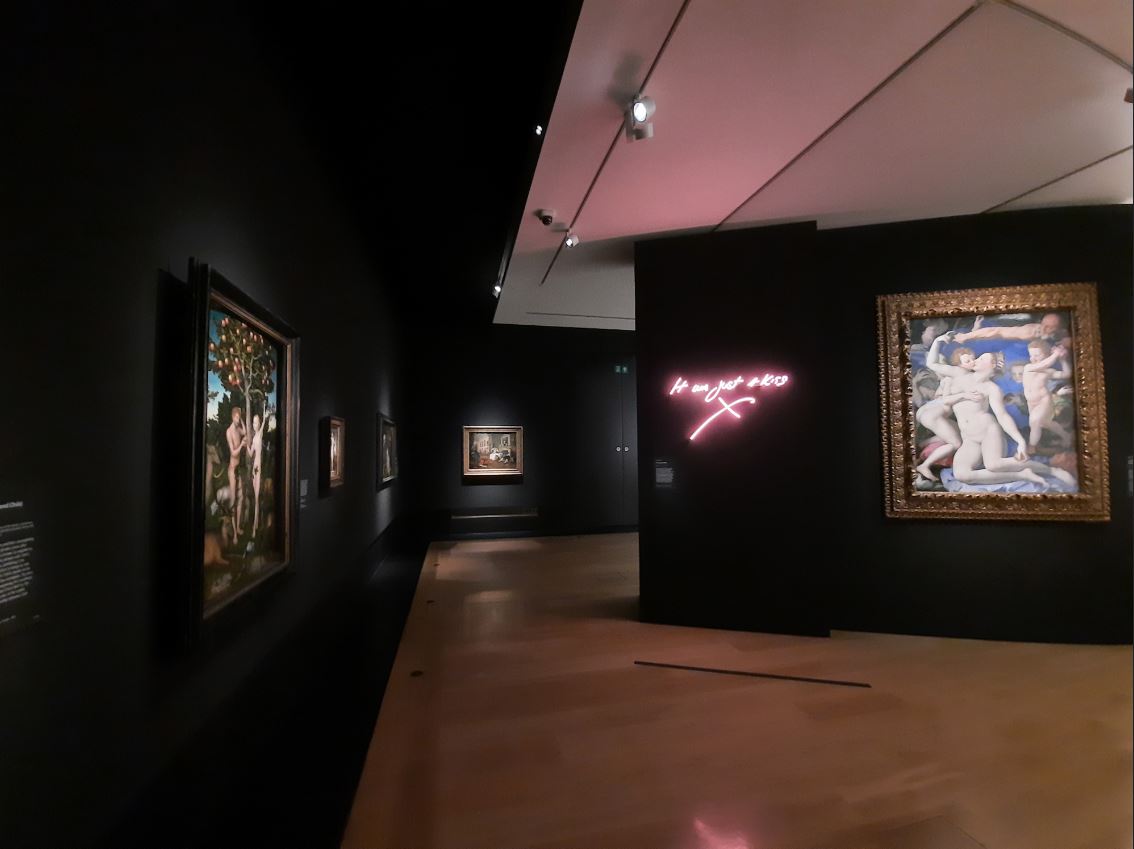Sin – National Gallery, London
Review of the exhibition Sin at the National Gallery. So much more relaxing to visit the permanent gallery spaces than the paid exhibitions!
A Successful Trip to the National Gallery!
Finally, I’ve managed a post-lockdown/semi-lockdown outing to the National Gallery without finding it overwhelming. The difference is that this time, unlike when I saw Titian and Artemisia, I was not seeing a paid exhibition. I felt very pleased with this choice when I saw the two queues waiting to enter. The paid exhibition queue was much longer and pushier, whereas the permanent gallery queue was a lot more orderly. I still had to traipse all around the galleries to get in and out of Sin, but it was nice to have a quieter time. I even had the exhibition to myself for most of my visit.
The National Gallery website really talks Sin up, but it’s a very simple exhibition. Just a room and an anteroom in fact. The philosophy of sin that is under discussion is very much Judeo-Christian and the curators acknowledge as much – perhaps this is unavoidable when the exhibition draws from the National Gallery’s back catalogue of Western art. In any case it is steeped in mostly Christian concepts. There are Adams and Eves by Cranach and Breughel, and an Immaculate Conception by Velasquez. There’s a work entitled The Effects of Intemperance which is in conversation with Hogarth’s Marriage à la Mode. There is also of course Bronzino’s mysterious Allegory with Venus and Cupid, which is so sinful a director of the National Gallery had it overpainted to make it decent. In terms of later works, William Holman Hunt represents the Pre-Raphaelites with his rainbow Scapegoat.
Contemporary Sin Alongside the National’s Historic Collection
What makes the exhibition particularly interesting in terms of illuminating the National Gallery’s collection is that it intersperses contemporary works alongside the historic. Bronzino’s Venus kisses Cupid (with tongue!) alongside Tracy Emin’s It Was Just A Kiss. A Christ-like work by Ron Mueck, Youth, interrogates stereotypes around sin and redemption. It speaks to the continuing legacy of Christian art historical themes on artists today.
It is also interesting to note that the majority of even the historic works were created for personal rather than religious use. They are thus not so much a public sermon as a private object to cherish. Much like the work of modern artists. The lines between the religious and the everyday or secular thus blur – rethinking Tracy Emin et al. in this light is fascinating. Is it so different to own a reflection of sin in neon lights now than it was to hang a Garden of Eden on the wall a few centuries ago?
So Sin is an itsy-bitsy exhibition, but a nice one nonetheless. It’s a shame that due to Lockdown 2.0 it is only open for about a month [Edit: now probably only a couple of weeks thanks to Tier 3 unless it’s extended]. If it’s possible to see it before it closes, I would definitely recommend it for anyone who has a ticket to the National Gallery’s permanent collection. For me it has been a nice reminder that there are quieter corners if I avoid the ‘blockbuster’ shows.
Salterton Arts Review’s Rating: 3.5/5
Sin until 3 January 2021 [now subject to change – check gallery website for details]
If you see this after your page is loaded completely, leafletJS files are missing.









Bronzino’s “Allegory with Venus and Cupid” is the subject of my historical novel “Cupid and the Silent Goddess”, which imagines how the painting might have been created in Florence in 1544.
See: https://www.pagedor.co.uk/books/p/cupid-and-the-silent-goddess-alan-fisk